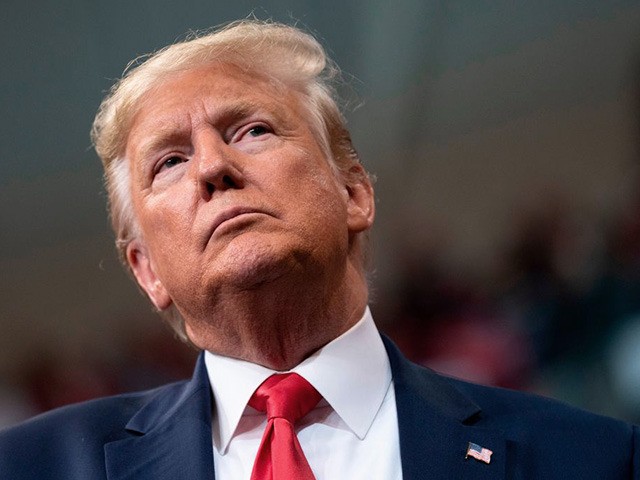President Donald Trump’s 2021 budget request shifts science funding to fuel the nation’s economic growth and reduces funding for the projects favored by the science establishment at the nation’s universities.
Spending is increased on “industries of the future” via favored agency projects, says the budget request, adding:
The Budget prioritizes accelerating AI solutions. Along with quantum information sciences, advanced manufacturing, biotechnology, and 5G research and development (R&D), these technologies will be at the forefront of shaping future economies. The Budget proposes large increases for key industries, including doubling AI and quantum information sciences R&D by 2022 as part of an allof-Government approach to ensure the United States leads the world in these areas well into the future.
The budget report quotes an April 2019 statement by Trump:
Secure 5G networks will absolutely be a vital link to America’s prosperity and national security in the 21st Century. 5G will be as much as 100 times faster than the current 4G cellular networks. It will transform the way our citizens work, learn, communicate, and travel. It will make American farms more productive, American manufacturing more competitive, and American healthcare better and more accessible. Basically, it covers almost everything, when you get right down to it. Pretty amazing.
The money is extracted from lower-priority science projects. “It’s another sea of red ink for federal research funding programs in President Donald Trump’s latest budget proposal,” according to a report by a group that favors university-based science projects. The article from the American Association for the Advancement of Science (AAAS) says:
Overall, federal spending on civilian basic research would drop by 9%, or $13.78 billion, to $142.185 billion. The government’s investment in scientific infrastructure—large facilities and special equipment—would plunge by 40%, to $3.6 billion. Spending on defense basic research would fall by 6%, or $2.822 billion, to $40.638 billion.
As always, Congress will have the final say on spending for the 2021 fiscal year, which begins on 1 October. In recent years, lawmakers have largely rejected the Trump administration’s proposed cuts and instead increased major science agency budgets, or at least held them flat.
The AAAS website also posted budget-request numbers showing a nine percent cut in science funding, or a drop of $7.9 billion.
The White House budget document lists some of the losing programs:
Redirects Funds from Lower Priority Science and Education Programs to Higher Priorities. Consistent with prior budgets, the Budget provides no funding for the Wide Field Infrared Survey Telescope, two Earth science missions, and the Office of Science, Technology, Engineering, and Mathematics (STEM) Engagement. The Budget continues to support education activities such as internships and fellowships funded outside of the Office of STEM Engagement. The Budget also proposes to terminate the SOFIA telescope, which has not proven to be as scientifically productive as other missions.
The winners include:
Supports Cutting-Edge Basic Research. The Budget provides $5.8 billion for the Office of Science to continue its mission to focus on early-stage research, operate national laboratories, and continue high priority construction projects. Within this amount: $475 million is requested for Exascale computing to help secure the United States as a global leader in supercomputing; $237 million is requested for quantum information science; $125 million is requested for AI and machine learning; and $45 million is requested to enhance materials and chemistry foundational research to support U.S.- based leadership in microelectronics.
The universities have a lot of influence on House and Senate legislators, so they may be able to reverse many of the cuts to their favored programs.
The White House’s policy pressure comes as U.S. companies fall behind Chinese rivals, and as the science sector defends its reliance on imported Indian and Chinese workers, some of whom steal technology for Chinese companies.
The White House’s policy tries to coordinate research at many agencies towards the “Industries of the Future” goal. For example, Pentagon spending “Ensures Technological Superiority by Investing in Industries of the Future,” said the report, which adds:
The Budget supports critical investments to regain and sustain U.S. technological superiority to counter and overmatch emerging threats. The Budget invests over $14 billion in DOD science and technology programs that support key investments in industries of the future, such as artificial intelligence, quantum information science, and biotechnology, as well as core DOD modernization priorities such as hypersonic weapons, directed energy, 5G, space, autonomy, microelectronics, cybersecurity, and fully-networked command, control, and communications.
The focus on “Industries of the Future” includes some effort to improve K-12 vocational training and university training:
The Budget includes $2 billion for CTE [Career and Technical Education } State Grants. This substantial increase over the 2020 enacted level builds on the Strengthening Career and Technical Education for the 21st Century Act, which would help ensure that all of the Nation’s high schools are able to offer high-quality CTE programs.
The Budget also includes $90 million for CTE National Programs to support high-quality science, technology, engineering, and mathematics and computer science CTE programs. In addition, the Budget proposes to double the American Competiveness and Workforce Improvement Act of 1998 fee for the H-1B visa program and direct 15 percent of the revenues to CTE State Grants, which is estimated to provide more than $100 million in additional funding for this program.
However, the budget does not include any significant measure to reduce the use of Chinese and Indian workers and scientists, leading science leaders with little incentive to begin the long-term task of training and recruitment of Americans.

COMMENTS
Please let us know if you're having issues with commenting.